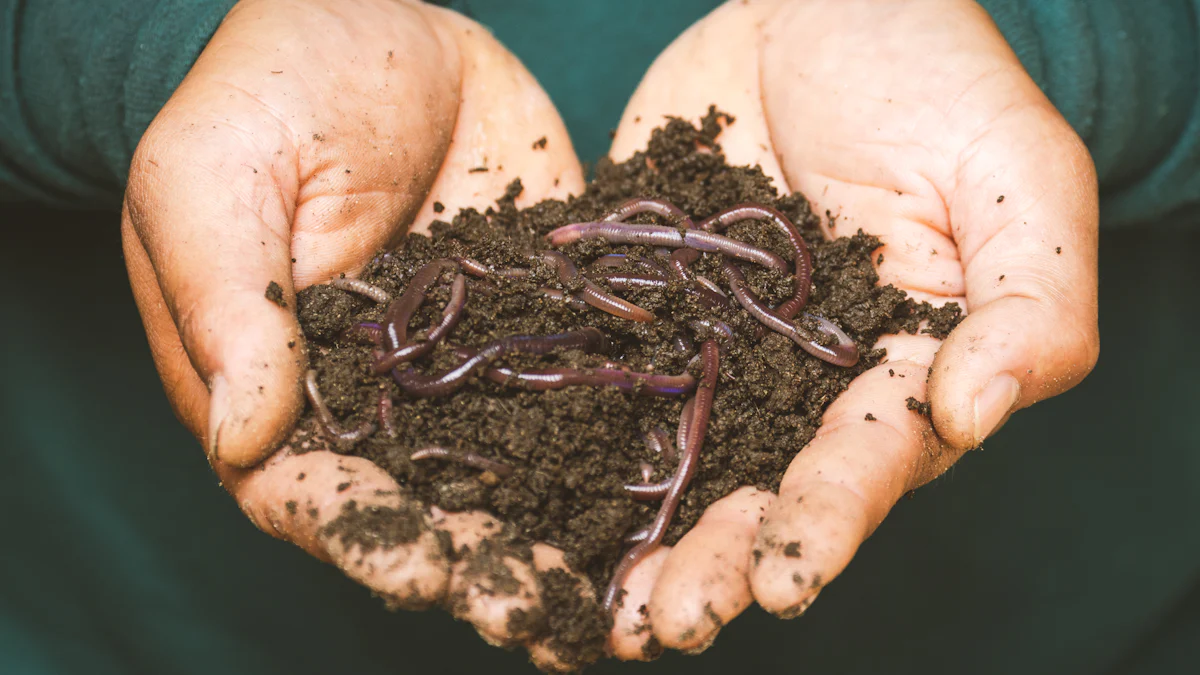
Calci worms dried offer an easy way to provide wildlife with a nutrient-packed food source. These worms are rich in calcium, which supports strong bones and overall health in animals. Their dried form ensures convenience for you while retaining essential nutrients. By including calci worms dried in your feeding routine, you can help wildlife thrive, especially during critical periods like breeding or migration. This simple addition to their diet can make a significant difference in their well-being.
Key Takeaways
- Calci worms dried are a nutrient-rich food source, high in calcium, essential for the health of wildlife, particularly during breeding and migration.
- Their long shelf life and convenience make calci worms dried an easy addition to your wildlife feeding routine, eliminating the mess of live worms.
- These worms are suitable for a variety of wildlife species, including birds, reptiles, and small mammals, providing essential nutrients for their growth and well-being.
- Proper storage is crucial; keep calci worms dried in a cool, dry place in airtight containers to maintain their quality and prevent spoilage.
- Rehydrate calci worms dried before feeding to enhance their appeal and mimic the texture of live prey, encouraging wildlife to consume them.
- Choose safe feeding locations away from hazards and ensure the feeding area remains clean to protect wildlife from potential dangers.
- Monitor portion sizes and feeding frequency to avoid overfeeding, ensuring wildlife maintains their natural foraging instincts and health.
Benefits of Calci Worms Dried
High Nutritional Value
Calci worms dried provide an exceptional source of nutrition for wildlife. These worms are packed with calcium, which is essential for strong bones, healthy feathers, and proper muscle function. Calcium also plays a critical role in supporting egg production for birds during breeding seasons. Unlike other dried worms, calci worms dried contain significantly higher levels of calcium, making them a superior choice for wildlife feeding. By including them in your feeding routine, you ensure that animals receive the nutrients they need to thrive.
Long Shelf Life and Convenience
One of the greatest advantages of calci worms dried is their long shelf life. You can store them for extended periods without worrying about spoilage. Proper storage in a cool, dry place keeps them fresh and ready for use whenever needed. Their dried form also eliminates the mess and hassle associated with live worms. You can easily transport and handle them, making them a convenient option for both beginners and experienced wildlife enthusiasts. This convenience allows you to focus on feeding wildlife without unnecessary complications.
Ideal for Various Wildlife Species
Calci worms dried are suitable for a wide range of wildlife species. Birds, reptiles, and small mammals all benefit from their high nutritional content. For birds, these worms provide the energy needed during migration or nesting periods. Reptiles enjoy them as a calcium-rich supplement to their diet. Even small mammals like hedgehogs can gain essential nutrients from these worms. Their versatility makes them an excellent addition to your efforts in supporting diverse wildlife populations.
Preparation and Storage of Calci Worms Dried
Proper Storage Tips
Storing calci worms dried correctly ensures their quality and nutritional value remain intact. You should always keep them in a cool, dry place. Moisture can cause them to spoil or lose their effectiveness as a food source. Use an airtight container to protect them from humidity and pests. Avoid exposing the container to direct sunlight, as heat can degrade the nutrients.
If you purchase calci worms dried in bulk, divide them into smaller portions. This method helps you access only what you need while keeping the rest fresh. Label the containers with the purchase date to track their shelf life. Regularly check for any signs of spoilage, such as unusual odors or discoloration. Proper storage practices will ensure that your supply stays safe and ready for feeding.
Preparing Calci Worms Dried for Feeding
Before offering calci worms dried to wildlife, you should prepare them properly. While they are ready to use in their dried form, soaking them in warm water for about 20–30 minutes can make them more appealing. This process rehydrates the worms, adding moisture that benefits animals, especially during dry seasons. Rehydrated worms also mimic the texture of live prey, encouraging wildlife to consume them.
After soaking, drain the excess water and place the worms in a clean dish or feeder. Avoid mixing them with other foods unless you are certain the combination is safe for the species you are feeding. Always clean the feeding area after each use to prevent contamination. By preparing calci worms dried correctly, you provide wildlife with a nutritious and safe food source.
Feeding Techniques for Calci Worms Dried
How to Present Calci Worms Dried
Presenting calci worms dried in an appealing way encourages wildlife to consume them. Use a clean, shallow dish or a specialized feeder designed for small animals or birds. Place the worms in a visible area where animals can easily spot them. Avoid scattering them directly on the ground, as this can attract pests or make the food less hygienic.
For birds, consider using a platform feeder or a hanging dish. These options keep the worms elevated and safe from ground predators. Reptiles and small mammals may prefer a flat surface or a low dish placed near their usual feeding spots. Always ensure the feeding area remains clean to prevent contamination or the spread of disease.
Portion Sizes and Feeding Frequency
Providing the right portion size ensures wildlife receives adequate nutrition without overfeeding. Start with small amounts and observe how quickly the animals consume the worms. For birds, offer a handful of calci worms dried per feeding session. Reptiles and small mammals may require fewer worms based on their size and dietary needs.
Feed wildlife once or twice daily, depending on the species and their activity levels. During breeding or migration seasons, you may need to increase the frequency slightly to meet their higher energy demands. Monitor the feeding area regularly and adjust portions as needed to avoid waste or attracting unwanted pests.
Choosing Safe Feeding Locations
Selecting a safe location for feeding protects wildlife from potential dangers. Choose areas away from busy roads, predators, or other hazards. For birds, place feeders in spots with nearby trees or shrubs. These provide shelter and a quick escape route if needed. Reptiles and small mammals benefit from feeding areas close to their natural habitats, such as near bushes or rocks.
Avoid feeding in areas prone to flooding or extreme weather conditions. Keep the location consistent so animals can rely on it as a regular food source. If you notice signs of overcrowding or competition among species, consider setting up multiple feeding stations to reduce stress and ensure all animals have access to the food.
Wildlife Species That Benefit from Calci Worms Dried
Birds
Birds gain immense benefits from calci worms dried. These worms provide a rich source of calcium, which strengthens their bones and supports healthy feather growth. During breeding seasons, birds require extra calcium for egg production. Offering calci worms dried ensures they meet this critical nutritional need. You can also help migratory birds by providing these worms, as they deliver the energy needed for long journeys. Place the worms in feeders or shallow dishes to make them easily accessible to your feathered visitors.
Reptiles
Reptiles thrive on calci worms dried as a dietary supplement. Calcium is essential for reptiles to maintain strong bones and prevent metabolic bone disease. These worms serve as an excellent addition to their regular diet, especially for species like lizards and turtles. Rehydrating the worms before feeding makes them more palatable and easier for reptiles to consume. By including calci worms dried in their meals, you ensure they receive the nutrients necessary for their growth and overall health.
Other Small Animals
Small animals, such as hedgehogs and amphibians, also benefit from calci worms dried. These creatures often face challenges in finding calcium-rich food sources in the wild. By offering calci worms dried, you provide them with a reliable and nutritious option. Hedgehogs, for instance, use the calcium to support their skeletal health, while amphibians gain energy for their active lifestyles. Place the worms in areas where these animals naturally forage to encourage their consumption.
Common Mistakes to Avoid When Using Calci Worms Dried
Overfeeding Wildlife
Overfeeding wildlife can lead to unintended consequences. Animals may become overly dependent on the food you provide, reducing their natural foraging instincts. This dependency can disrupt their ability to find food in the wild. Offering excessive amounts of calci worms dried may also attract pests like rodents or insects to the feeding area.
To avoid overfeeding, start with small portions and observe how much wildlife consumes. Adjust the quantity based on their needs and activity levels. Providing a balanced diet is essential, so consider calci worms dried as a supplement rather than the sole food source. By managing portion sizes, you help wildlife maintain their natural behaviors and health.
Improper Storage Practices
Improper storage can compromise the quality and safety of calci worms dried. Exposure to moisture, heat, or pests can cause spoilage, reducing their nutritional value. Storing them in unsuitable conditions may also lead to contamination, which can harm the animals you aim to support.
Always store calci worms dried in a cool, dry place. Use airtight containers to protect them from humidity and pests. Keep the containers away from direct sunlight to preserve their nutrients. Regularly check for signs of spoilage, such as unusual odors or discoloration. Proper storage ensures that your supply remains fresh and safe for wildlife consumption.
Feeding in Unsafe Locations
Feeding wildlife in unsafe locations can expose them to unnecessary risks. Areas near busy roads, predators, or harsh weather conditions can endanger the animals. Placing food in inappropriate spots may also lead to overcrowding, increasing competition and stress among species.
Choose feeding locations carefully. For birds, select areas with nearby trees or shrubs that offer shelter and escape routes. Reptiles and small mammals benefit from feeding spots close to their natural habitats, such as near rocks or bushes. Avoid placing food in areas prone to flooding or extreme temperatures. Consistency in location helps animals rely on the feeding site without facing unnecessary dangers.
By avoiding these common mistakes, you create a safer and more effective feeding experience for wildlife. Thoughtful practices ensure that calci worms dried provide maximum benefits while minimizing potential risks.
Calci worms dried offer an excellent way to support the health of local wildlife. By preparing and storing them correctly, you ensure their nutritional value remains intact. Feeding wildlife with these worms helps you contribute to a balanced ecosystem. Their versatility makes them suitable for birds, reptiles, and small mammals. Start incorporating calci worms dried into your feeding routine today. Your efforts can make a meaningful difference in the well-being of wildlife around you.
FAQ
What are calci worms dried made of?
Calci worms dried are the larvae of black soldier flies. These larvae are harvested and then dried to preserve their nutrients. They are a natural and sustainable food source, rich in calcium and other essential nutrients.
How do calci worms dried compare to mealworms?
Calci worms dried contain significantly more calcium than mealworms. This makes them a better choice for supporting bone health, egg production, and overall vitality in wildlife. They also have a softer texture, which some animals find easier to consume.
Can I feed calci worms dried to my pets?
Yes, you can feed calci worms dried to pets like reptiles, amphibians, and even some small mammals. Always check if the species you are feeding can safely consume them. Consult a veterinarian if you are unsure about adding calci worms dried to your pet’s diet.
Do I need to soak calci worms dried before feeding?
Soaking calci worms dried is optional but recommended. Rehydrating them in warm water for 20–30 minutes adds moisture, making them more appealing and easier to eat. This step is especially helpful during dry seasons or for animals that prefer softer textures.
How long can I store calci worms dried?
You can store calci worms dried for several months if kept in a cool, dry place. Use an airtight container to protect them from moisture and pests. Proper storage ensures they remain fresh and retain their nutritional value.
Are calci worms dried safe for all wildlife?
Calci worms dried are safe for most birds, reptiles, and small mammals. However, avoid feeding them to animals with specific dietary restrictions or allergies. Always research the dietary needs of the species you are feeding to ensure safety.
How often should I feed calci worms dried to wildlife?
Feed calci worms dried once or twice daily, depending on the species and their activity levels. During breeding or migration seasons, you may increase the frequency slightly. Monitor consumption to avoid overfeeding or attracting pests.
Can calci worms dried attract pests?
Improper storage or feeding practices can attract pests like rodents or insects. Store them in airtight containers and clean feeding areas regularly. Avoid scattering them directly on the ground to minimize pest issues.
Where should I place feeders for calci worms dried?
Place feeders in safe locations away from predators, busy roads, or harsh weather conditions. For birds, choose spots near trees or shrubs. For reptiles and small mammals, place feeders close to their natural habitats, such as near rocks or bushes.
Are calci worms dried environmentally friendly?
Yes, calci worms dried are an eco-friendly food source. Black soldier fly larvae are raised sustainably and require fewer resources compared to other animal feeds. By using calci worms dried, you support both wildlife and the environment.


